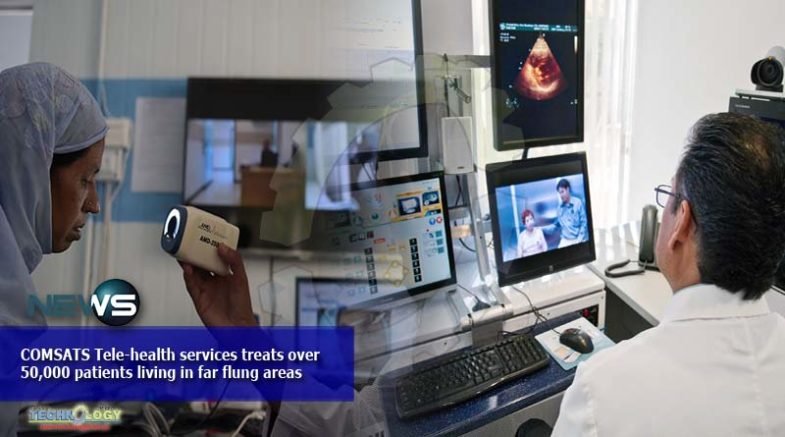COMSATS through its Tele-Health services has given treatment facilities to more than 50,000 patients so far including 80 percent ladies living in far flung areas of Pakistan.
 Project Manager Telehealth, COMSATS internet Services, Dr. Nadia Rasheed informed media that Tele-Health is a form of delivering healthcare facilities of medical consultation, diagnosis and treatment to patients through information and Technologies (ICTs).
Project Manager Telehealth, COMSATS internet Services, Dr. Nadia Rasheed informed media that Tele-Health is a form of delivering healthcare facilities of medical consultation, diagnosis and treatment to patients through information and Technologies (ICTs).
COMSATS Internet Services (CIS) is a pioneer of Tele-Health in Pakistan and has set up a network of rural Tele-health center in Islamabad, Swabi, Quetta, Lahore, Multan, Peshawar, Gwadar, Khairpur, Musakhail and Rawalpindi for giving healthcare facility to the marginalized segments.
She informed that the paramedics at the connected tele-health clinics help the medical specialist at CIS Tele-health resource center through video conferencing to get interactive history followed by complete check up using digital diagnostic instruments such as digital stethoscope, vital signs monitor, examination camera, ultrasound probe, ECG glove etc.
She said that patient information collected during initial checkup by the paramedic staff can be examined simultaneously by the doctor at CIS Tele-health center in Islamabad.
She further told that the doctor then provides medical consultation to the patient and transmits prescription to the remote end, a print out of which is given to the patient by paramedic staff. The computerized database of patients and their medical history is maintained at the well equipped center.
The patients who need further examination and treatment are also referred to nearby hospitals with transfer of their records to the referred hospital for guidance.
Dr. Nadia Rasheed said this service is especially useful for resource constraint marginalized communities and populations living in far flung areas from large metropolitan in terms of cost-effectiveness, time saving and instant accessibility.
She said that the patients at basic health units can get medical opinion from doctors at secondary or tertiary health care units through this facility.
Tele-Health services has four distinct technical modalities which include live video conferencing, store and forward transmission of patient data and monitoring of patient remotely.
Dr. Nadia said the service was initiated mainly to provide specialist healthcare to under privileged areas through referring patients to nearest hospitals for further treatment if necessary, guiding patients about preventive healthcare and nutritional information for a healthy lifestyle, maintain digitalized database of patients and their medical history to enable doctor to interact with patients in real- time for further visits.
The reports of patient statistics of these areas are maintained to see prevailing diseases and foresee further probability of infections or diseases.
Dr. Nadia was of the view that it very important to develop long term tele-health strategic plans, provide necessary telecommunications infrastructure and begin necessary linkages, sharing experiences and exchange ideas.
